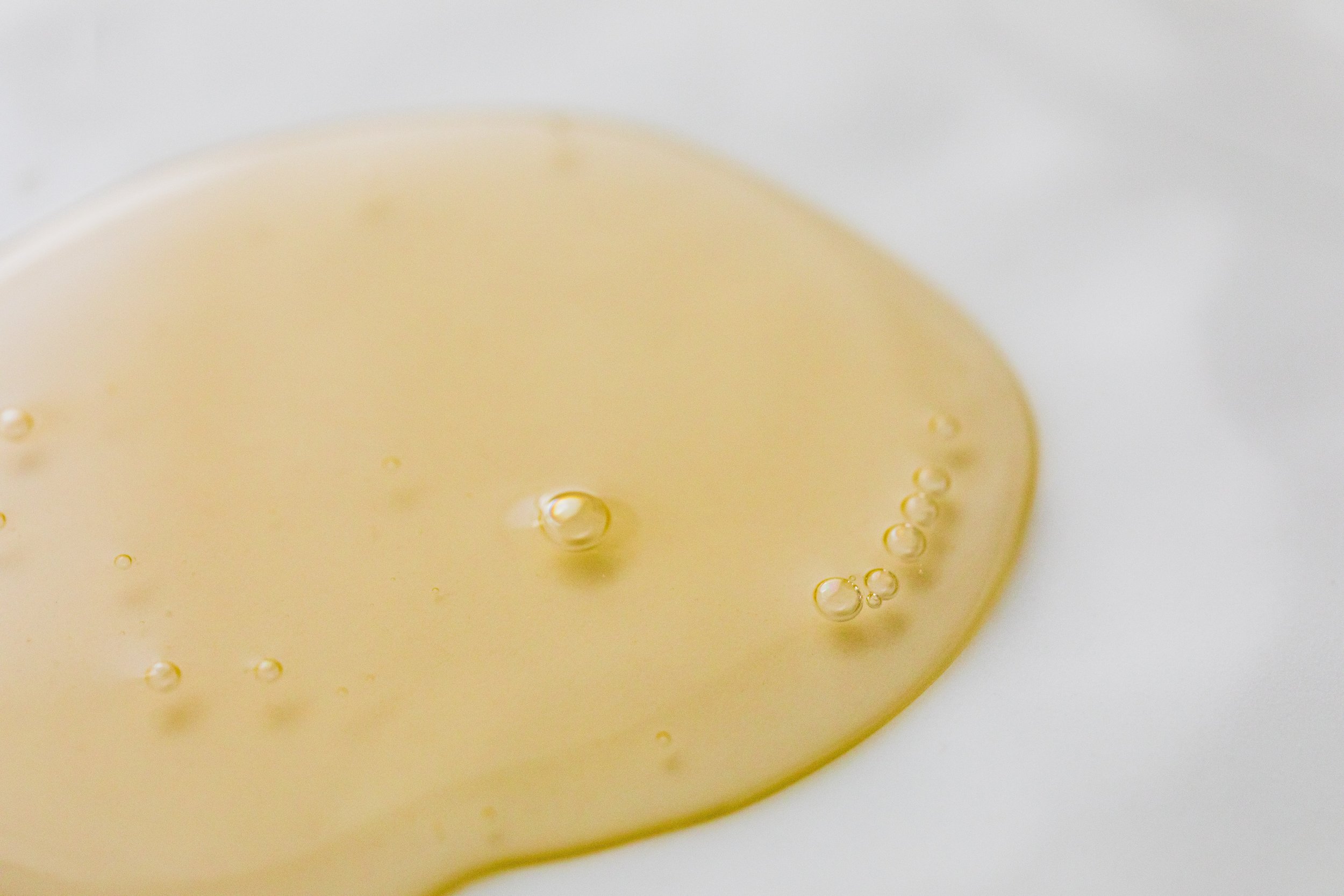Have Acne-Prone, Oily, or Blemish-Prone Skin? This is Your Game-Changing Ingredient
Salicylic Acid: The Game-Changing Skincare Ingredient You Need in Your Routine
We all want clear, glowing, and healthy-looking skin, but sometimes it feels like no matter what we do, we can't seem to achieve it. That's where Salicylic Acid (SA) comes in. This powerful skincare ingredient is a game-changer when it comes to treating acne-prone, oily, and blemish-prone skin. It's no wonder that it’s trending and becoming increasingly popular in the skincare industry.
So what is Salicylic Acid, and why is it so popular?
Salicylic Acid is a type of beta hydroxy acid (BHA) derived from willow bark, and it's been used for centuries to treat various skin conditions. It's a natural exfoliant that works by dissolving dead skin cells and unclogging pores, making it a popular ingredient in many skincare products. SA is also known for its anti-inflammatory properties, making it an effective ingredient for reducing redness, inflammation, and irritation.
In 2022, SA started to gained a lot of popularity in the skincare industry, being the most searched skincare ingredient of the year with an average of 60,000 google searches per month, and for a good reason. It's an effective ingredient for treating a range of skin concerns, including acne, oily skin, blackheads, and whiteheads. It's also gentle enough to use on sensitive skin, making it a versatile ingredient that can be incorporated into almost any skincare routine.
Lets breakdown the science
Salicylic Acid works by dissolving the bonds that hold dead skin cells together.
This makes it a powerful exfoliant that can penetrate deep into the pores to unclog them and prevent acne from forming. Unlike other exfoliants that work on the surface of the skin, SA is oil-soluble, which means that it can penetrate deep into the pores to dissolve excess oil and sebum.
Once it penetrates the pores, it works to dissolve the build-up of dead skin cells and oil that can lead to acne. This is because it is a keratolytic agent, which means that it can dissolve the keratin protein that holds dead skin cells together. This process helps to unclog the pores, allowing the skin to breathe and preventing the formation of acne.
the incredible Benefits of Salicylic Acid
Salicylic Acid is a powerful ingredient that offers a range of benefits for the skin. Here are just a few of the reasons why it's worth incorporating into your skincare routine:
Clears Acne: SA is an effective ingredient for treating acne. It works by dissolving dead skin cells and unclogging pores, which helps to prevent breakouts from forming.
Reduces Inflammation: SA has anti-inflammatory properties, which can help to reduce redness and inflammation associated with acne and reduce the risk of scarring.
Reduces Oiliness: SA is also an effective ingredient for reducing oiliness in the skin. It works by dissolving excess oil and sebum, which helps to keep the skin looking fresh and matte.
Exfoliates the Skin: SA is a natural exfoliant that works by dissolving dead skin cells on the surface of the skin. This helps to keep the skin looking smooth and bright, and can also help to reduce the appearance of fine lines and wrinkles.
Reduces the Appearance of Pores: SA is an effective ingredient for reducing the appearance of pores. It works by dissolving the oil and sebum that can clog pores, which helps to keep them clean and clear.
Improves Skin Texture: SA can also help to improve the overall texture of the skin. It works by exfoliating the skin, which helps to reduce the appearance of rough patches and bumps.
What you need to know before buying your first salicylic acid product…
When looking to buy your new Salicylic Scid product, there are a few key things to keep in mind. You can find this specific ingredient in many different forms, such as face cleansers, gels, creams, moisturisers, serums, scrubs, etc. Since it is a chemical exfoliator, you should only look for low dosages or concentrations- 0.5 to 5% and different skin types need different concentrations.
Find your skin’s ideal dosage (you can consult your dermatologist for a clear dosage recommendation):
When used as a gel or soap, the minimum requirement is 0.5%-5% and should be used at least once per day.
If it’s a lotion, a concentration of 1-2% and recommended to be used 1-3 times per day.
If it’s an ointment, it should contain at least 3-6% concentration and used as needed.
If it’s serum or solution, it must be at a concentration of 0.5-2% and applied once a day.
Be careful not to over-exfoliate weekly, if using Salicylic Acid weekly: products as directed and to avoid over-exfoliating. Over-exfoliating can damage the skin's natural barrier, which can lead to sensitivity, dryness, and inflammation.
Stay away from silicone: Some products use silcone to give the illusion that your skin is smooth and moisturised, when actually it simply forms a film on the surface of your skin. This not only adds uncecesary layering but can also trap debris that cause acne under this layer.
Make sure its fragrance free: As always with ANY products, try and avoid synthetic fragrance and essential oils as they are a common cause of skin irritation.
How to add salicylic acid into your daily skincare routine:
Incorporating Salicylic Acid into your skincare routine is easy, and there are a range of products available that contain this powerful ingredient. Whether you prefer a SA cleanser, toner, serum, or spot treatment, there's a product out there that will suit your skin type and concerns.
The most common ways to use SA is by applying it as a cleanser or moisturiser that contains the ingredient.
A basic skincare routine usually follows these order of steps: Cleanser, then Toner, Serums, Moisturiser, Sunscreen, and finish with Makeup on top if you wear it.
If you buy it in moisturiser form: Use a moisturiser infused with Salicylic Acid at the same step in your skincare routine you would use your current moisturiser. Ideally, this would be 2 times a day and always after cleansing, exfoliating, or applying serums.
If you buy it in cleanser form: If you're using a SA cleanser, it's important to leave it on the skin for the recommended amount of time before rinsing it off. This will allow the SA to penetrate the pores and dissolve the build-up of dead skin cells and oil. Ideally, you could cleanse as step 1 morning and evening.
salicylic acid Products We love
Peach Slices - Acne oil-free moisturiser
Peach Slices offers this affordable, drugstore-friendly product infused with high-quality ingredients and has a mild 0.5-percent concentration of salicylic acid to dispel existing acne and prevent future breakouts over time. To help balance out the exfoliating component, it also contains hyaluronic acid, cica, allantoin, and cucumber to reduce signs of inflammation and dehydration.
2. Sweet Chef - Carrot & Ginger + Salicylic Acid Pore Cleanser
Looking for a cleanser to add to your acne treatment routine that is budget friendly? This under $20 product is an intensive cleanser that contains salicylic acid for its exfoliating properties, plus contains antioxidant-rich additives, including carrot and ginger to brightening boost dull skin.
3. Philosophy - Oil-Free Salicylic Acid Acne Treatment & Moisturiser
This Clear Days Ahead product is a best seller, especially for people that have oily skin types as its an ‘oil free’ forumula. It also contains antimicrobial ingredients which helps to eliminate acne-causing bacteria from the surface of the skin (yes, please).
The Bottom Line
So, if you're looking for a powerful ingredient that can help to transform your skin, look no further than Salicylic Acid. With its proven efficacy and versatility, it's no wonder that this ingredient is trending and becoming increasingly popular in the skincare industry.
It’s an amazing ingredient for treating acne, reducing oiliness, exfoliating the skin, reducing the appearance of pores, and improving skin texture, and is definitely worth incorporating into your skincare routine.










